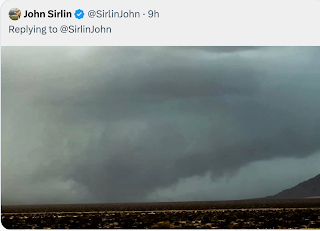Speaking of Rockets
Over the weekend (see below) I posted about science education and some of my exploits regarding rockets when I was in junior high and high school. Rockets play a critical role in obtaining essential data for forecasting the weather and monitoring our environment by launching satellites into orbit.
NASA is getting ready to launch our newest weather and environmental satellite, GOES-P. The new satellite has several exciting new capabilities that will be valuable to atmospheric and earth science. The photo above shows the first stage of the Delta rocket getting ready for assembly at the launching pad.
Weather satellites don't just take photos of the earth. They include sophisticated instruments that measure moisture and temperature in the layers of the atmosphere between the ground and the satellite and do so with a much higher resolution than weather balloons or even aircraft. This directly contributes to better weather forecasts.
For example, the infrared image of the clouds (that you would see on a TV weathercast) in the central U.S. shows little of interest over southern Kansas.
But, compare the simultaneous image that shows the distribution of moisture in the atmosphere:
Look at the swirl in the moisture field centered on the Kansas-Oklahoma border. That feature, important to forecasting thunderstorms, would likely not be detected absent the satellite data. Since the first weather satellite was launched in 1959, they have proven their value over and over again.
Hat tip: Anthony Watts.
NASA is getting ready to launch our newest weather and environmental satellite, GOES-P. The new satellite has several exciting new capabilities that will be valuable to atmospheric and earth science. The photo above shows the first stage of the Delta rocket getting ready for assembly at the launching pad.
Weather satellites don't just take photos of the earth. They include sophisticated instruments that measure moisture and temperature in the layers of the atmosphere between the ground and the satellite and do so with a much higher resolution than weather balloons or even aircraft. This directly contributes to better weather forecasts.
For example, the infrared image of the clouds (that you would see on a TV weathercast) in the central U.S. shows little of interest over southern Kansas.
Look at the swirl in the moisture field centered on the Kansas-Oklahoma border. That feature, important to forecasting thunderstorms, would likely not be detected absent the satellite data. Since the first weather satellite was launched in 1959, they have proven their value over and over again.
Hat tip: Anthony Watts.







Comments
Post a Comment